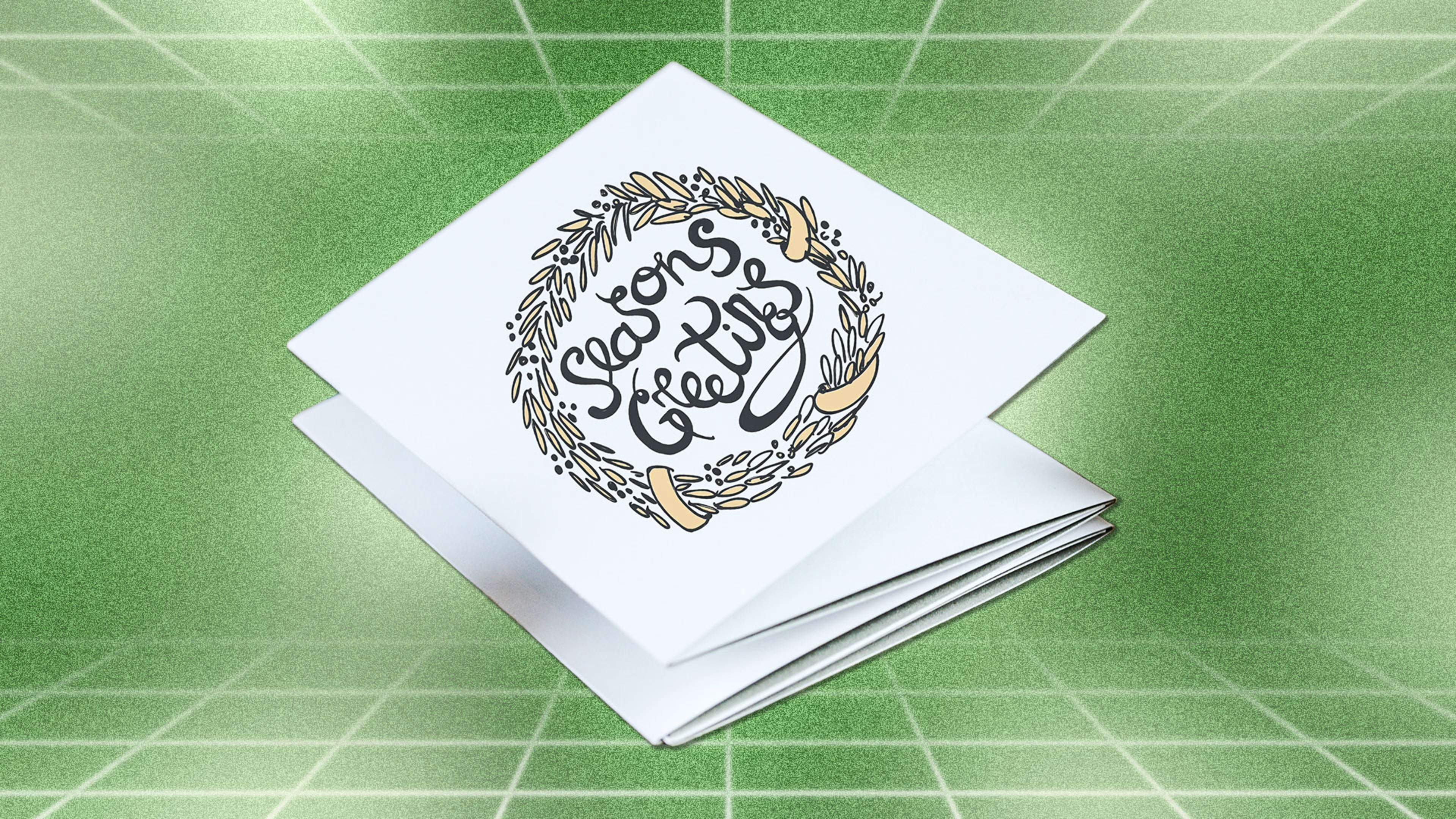Most people don’t have much snail mail to send. Bills, notifications, and other communication, like keeping in touch with friends and family, can all occur online. However, when the holiday season rolls around, people who haven’t thought about sending mail all year embrace it like a long, overdue hug.
Holiday cards give just about everyone the warm and fuzzies. They make for great displays, too, giving homes a little Christmas or Hanukkah flair—that is, until January hits and it’s time to throw them out.
Each year, 1.6 billion holiday cards are bought and sent in the United States alone, which makes for a lot of waste. One study found that sending around a billion cards produces the same amount of CO2 emissions as powering 22,000 homes for an entire year.
And paper greeting cards are not a tradition that only older generations feel invested in. According to data from The Greeting Cards Association, it’s the younger crowd, and the more tech savvy, who are buying the most paper cards. Given that Gen Z and millennials are still buying greeting cards, especially during the holiday season, the tradition is certainly not being phased out like an old mall Santa who’s lost his “rizz.” But that also means its environmental impact isn’t going anywhere, either.
Of course, those who don’t want to add to the annual massive holiday waste that takes place between Thanksgiving and New Year’s can always turn to e-cards. But there is something about pulling a beautifully printed card from your mailbox that brings good tidings to all. And now, fortunately, there are a growing number of companies invested in making cards to mail that won’t bring down the planet in the process.
Here are four companies to buy from this years, if you want to be more eco-friendly.
Tree-Free Greetings
Tree-Free Greetings doesn’t harm any trees, sparing thousands from untimely deaths. Instead, it uses sustainable materials like kenaf, hemp, wheat straw, and sugarcane waste for its greeting cards. That also saves around 1.5 million gallons of water, 2 million BTUs of energy, and 210 pounds of greenhouse gasses annually. Also, the brand gives to charity with every purchase.
Paper Culture
Similarly, Paper Culture has a radically eco-forward mission. The company only prints on recycled paper, leaves no carbon footprint with its process, and plants a tree for every order. Compared to other big-name card sites that don’t exclusively use recycled or sustainable materials, and don’t offset their carbon footprint, Paper Culture’s impact differs massively.
Botanical Paperworks
Planting trees is a meaningful way for card companies to invest in the Earth. But some companies are giving consumers the option to plant the seeds—or the cards themselves. Botanical Paperworks is a card-and-paper company that sells seed cards, which are put in the ground to grow wildflowers. The company’s holiday selection isn’t massive, but its mission certainly is.
Minted
Even greeting card companies that do create some waste, like Minted, have been making efforts to improve and are giving consumers more options to buy eco-friendly. In recent years, the company created a sustainability pledge, asserting that by the end of 2021, 100% of their stationary packaging would be recyclable or compostable, and 80% of the packaging would be made from recycled post-consumer waste or plant-based or sustainably sourced materials.
All this is good news for consumers who want options because if the holidays are the only time of year when you send greeting cards, you want it to be pretty spectacular—for you and the planet.
Recognize your brand’s excellence by applying to this year’s Brands That Matter Awards before the early-rate deadline, May 3.
